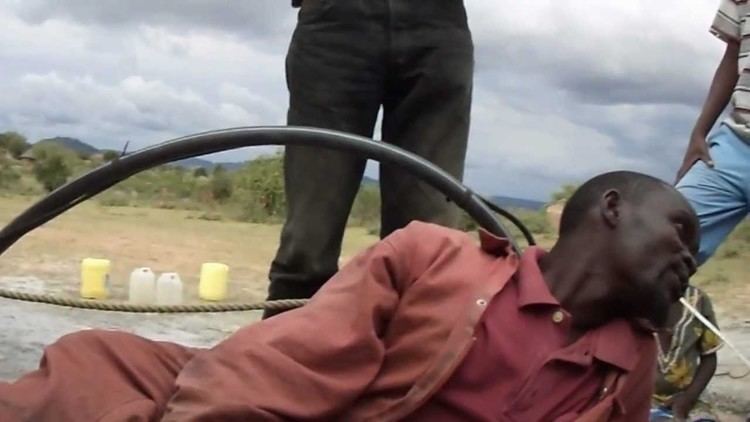Population 265,241 (2012) | ||
 | ||
Global resource alliance gra visits rorya district tanzania
Rorya District is a district in Mara Region, United Republic of Tanzania. The district capital is the town of Ingri Juu, while the largest town is Shirati. The district was created in 2007 from a part of Tarime District. It is bordered by Tarime District to the east, Butiama District to the south, Lake Victoria to the west, and the Republic of Kenya to the north. The majority of inhabitants of Rorya District are from the Luo tribe. Other ethnic groups are Kurya, Kine, Simbiti and Suba.
Contents
- Global resource alliance gra visits rorya district tanzania
- Pr pump test at waningo sec school in rorya district
- Transport
- Issues
- Geographical background
- Constituencies
- Divisions
- Wards
- Economy
- References
According to the 2012 Tanzania National Census, the population of Rorya District was 265,241.
Pr pump test at waningo sec school in rorya district
Transport
Paved Trunk road T4 from Mwanza to the Kenyan border passes through Rorya District from south to east.
Issues
The two biggest problems in Rorya District are hunger and AIDS.
Geographical background
Rorya District is among the newly established Councils, which commenced official on 1 July 2007. It has emerged from division of Tarime District Council. The District is situated in the North of Tanzania and lies between latitudes 1°00" – 1°45" south of the Equator and longitudes 33° 30" – 35° 0" east of the meridian. Rorya district has two agro-economical zones namely the midlands and low lands. The zones are situated between approximately attitudes 800mm and 1200mm with temperature varying from 14° C-30° C. The annual rainfall ranges between 700mm - 1200mm. The District is bordered by the Republic of Kenya to the North, Tarime District to the east, Musoma District to the south and Lake Victoria to the Western side. Rorya District has a total area of 9,345 square kilometers.
According to The housing census of 2002 the District has 217,176 people of which 101,907 are males, and 115,269 are females. The average growth rate is 2.8% as from 1998 to 2002.
Rorya District has two distinguishable agro-ecological zones namely the midlands and lowlands. The zones are situated between altitude 800 and 1,200 meters above sea level wit
Constituencies
For parliamentary elections, Tanzania is divided into constituencies. Since 1995 elections Rorya District had one constituency:
Divisions
There are four division,
- Girango,
- Nyancha
- Suba
- Luo Imbo
Wards,
There are 21 wards namely; (with total population - 2012)
Economy
The economy of Rorya residents and the district council depend on Agricultural, Livestock keeping, Fishing, Small industries and other resources:
Agricultural
More than 89% of the people living in the District depend on agriculture for their living. The District has 291,375 hectare, which are arable lands whereby 130,481 hectare are under cultivation. Area suitable for the irrigation is 17,350 square kilometers where irrigation takes place only at 1,039 square kilometers.
Livestock keeping
More than 70% Rorya citizens participate in local livestock keeping. At least 27,718 household are livestock keepers. Despite of the challenges they face (Livestock diseases and theft). The Luo people are good in livestock keeping in the district; Livestock are used for providing milk, meat, capital for most economic transactions, cultural object for variety of rites and plaughing
The environmental impacts caused by livestock keeping include burning of forestry – preparation of pastures, soil erosion and compartment. The mitigation measures being advocated are destocking, zero grazing, controlled burning.
Industries
The District has got 5 small scale Industries including Soap Making, Leather Processing, Bakery, Milk processing and Spice processing
Forestry
The district is endowed with natural resources that are virgin and natural. Forestry resources cover up to 1534 half of Rorya District land which is about 30% of the whole land of Rorya District. Other forests are owned by community 18% and individuals 12% known as Ngitiri for domestic uses like fuel, construction and medicine. The type of forest includes Miombo woodlands.
Mineral Resources
Mining activities in Rorya District is of small scale artisan mining. The data for mineral production is not readily available although it produces income to community, while in the District does not earn any income from this sector directly. There are also minerals used for construction like stones, aggregates and sand. There is also an unused natural gas source at Nyamusi area though no significant steps have been taken to extract and utilize it.
Fisheries
Rorya District council has got 7252 km2 area that is covered by Lake Victoria, whereby a total of 23 villages are situated along the lake shore. Due to this fact most of these villagers depends on fishing activities and other fishermen from the lake region. Rorya district also depends on it as a source of income that is generated from the fisheries activities. Some economic fish species found in the lake are Nile-peach, Tilapia and silver cyprinid (Omena in Luo)among other 500
Beekeeping
Beekeeping is the newly established project in Rorya as the way of generating income where by 10 groups were formed in different villages with almost 400 beehives .It should be noted that, the activity is not yet yield much fruits due to traditional way of participating. The beekeepers use the traditional hives.
